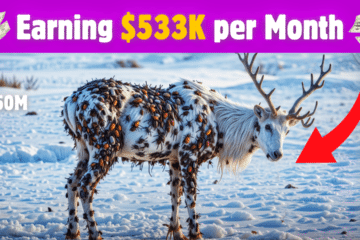How to Create Viral AI Cat Videos: A Comprehensive Guide
In the digital age, creating engaging content is essential for anyone looking to stand out. Cat videos, in particular, have captured the hearts of many, making them a popular choice for viral content. This guide will walk you through the process of creating viral AI cat videos, utilizing advanced techniques that not only enhance creativity but also ensure monetization. By the end, you’ll be equipped with the knowledge to produce captivating cat shorts that can potentially earn you substantial income.
The Importance of a Good Story
Before diving into the technical aspects of video creation, it’s crucial to understand the importance of storytelling. A compelling narrative is the backbone of any successful video. It draws viewers in and keeps them engaged. To develop your story, consider watching other cat videos for inspiration. Think about what makes them enjoyable and how you can incorporate similar elements into your content.
Once you have your story, it’s time to translate it into visual prompts. This step is essential for creating the imagery that will accompany your narrative. A well-crafted story will not only capture attention but also foster emotional connections with your audience.
Generating AI Image Prompts
With your story in hand, the next step is to generate AI image prompts. This process begins by inputting your story into an AI tool, such as ChatGPT. For example, consider the story: “A kitten was walking on the beach when a crocodile teased him. The kitten quickly asked his dad for help, and his dad took revenge on the crocodile.”
From this story, you can create prompts for three distinct scenes. The challenge lies in ensuring that the prompts accurately reflect the visuals you wish to create. It’s not uncommon for initial prompts to require adjustments, which is where reference images come in handy.
Using Reference Images
Reference images can significantly enhance the quality of your prompts. By uploading a reference image into ChatGPT, you can request a description that can be converted into an AI image prompt. This method allows for more accurate image generation, ensuring that the visuals align with your story’s characters and settings.
For example, if you need a crocodile as the villain, you can provide a reference image of a crocodile and ask ChatGPT to generate prompts that match the desired aesthetic. This approach streamlines the image creation process and increases the likelihood of achieving satisfactory results.
Choosing the Right AI Image Generators
Now that you have your prompts ready, it’s time to generate the images. There are several AI image generators available, each with its unique strengths. Here are a few options to consider:
- Bing Image Generator: A reliable option for generating images based on prompts.
- PAN: A user-friendly platform that allows you to create images by adjusting various settings.
- Flux AI: An advanced tool that provides detailed customization options for image generation.
When using these generators, remember that results can vary. It’s beneficial to test your prompts across different platforms to find the best fit for your needs. If one generator doesn’t yield satisfactory results, try another.
Creating the Video
After generating your images, the next step is to transform them into a video. For this, you can use tools like Runway ML. Start by creating a free account, then select the “Image to Video” feature. Upload your first generated image and input a prompt describing the desired movement or action, such as “kitten walking.” This process can be repeated for each scene in your story.
Once you’ve generated the video segments, download them and import them into a video editing tool like CapCut. Organize your clips on the timeline, ensuring a smooth flow that aligns with your narrative. You can crop clips to remove unwanted elements, such as watermarks, and enhance the audio experience by adding sound effects.
Enhancing Your Video with Sound
Sound plays a vital role in video engagement. Consider incorporating appropriate sound effects for each scene. For instance, add beach sounds, such as waves and birds, to create an immersive environment for your viewers. Background music can also enhance the emotional tone of your video.
CapCut offers various sound effects and music options to choose from. You can also source free sounds from platforms like YouTube, ensuring that your video is both engaging and legally compliant.
Final Touches and Exporting Your Video
With your video assembled, it’s time to add the finishing touches. You may choose to include subtitles for accessibility, as well as transitions to enhance the flow between scenes. While these elements can take additional time to implement, they significantly improve the overall quality of your video.
Once you are satisfied with your edits, export the final version of your video. Make sure to review it for any errors or adjustments needed before publishing. The final product should reflect your creativity and the effort put into crafting a compelling narrative.
Monetizing Your Content
Creating viral AI cat videos is not just about the fun of storytelling and video editing; it’s also about monetization. With the right approach, you can turn your passion into a profitable venture. Here are some strategies to consider:
- Ad Revenue: Platforms like YouTube offer ad revenue for creators who meet specific criteria. Focus on growing your subscriber base and views to qualify.
- Sponsored Content: Partner with brands related to pets or AI technology. Sponsored videos can provide a significant income boost.
- Affiliate Marketing: Promote products related to cat care or AI tools through affiliate links. You earn a commission for every sale made through your link.
Consistency is key. Regularly upload content to keep your audience engaged and attract new viewers. Utilize social media platforms to promote your videos and reach a broader audience.
Conclusion
Creating viral AI cat videos is an exciting journey that combines creativity, storytelling, and technology. By following the steps outlined in this guide, you will be well on your way to producing captivating content that resonates with viewers. Remember to leverage the available tools, keep experimenting, and most importantly, have fun with the process.
Don’t forget to grab your free prompt book from the provided link to help you get started on your creative journey. If you found this guide helpful, please share it with others who may benefit from it. Happy video-making!


